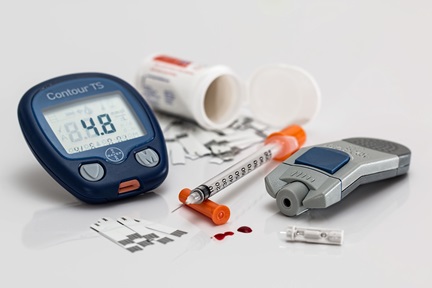Combatting tuberculosis, the “captain of all these men of death”
TOPNet aims to develop drugs to combat drug-resistant tuberculosis.
 Prof Gerhard Grüber and Assoc Prof Roderick Wayland Bates, two researchers from NTU who are developing drugs to combat drug-resistant tuberculosis.
Prof Gerhard Grüber and Assoc Prof Roderick Wayland Bates, two researchers from NTU who are developing drugs to combat drug-resistant tuberculosis.
Since the first antibiotic penicillin was discovered, it has been an arms race between humans and the pathogens that cause disease.
The World Health Organization lists antimicrobial resistance as one of the top public health threats facing humanity. Especially concerning is the rapid spread of multidrug-resistant disease-causing microorganisms, otherwise known as superbugs, that cause infections which cannot be treated effectively with existing antimicrobial drugs. About 1.2 million people died from antimicrobial-resistant infections in 2019 and by 2050, an estimated 10 million people could die from such infections annually.
With current antimicrobials becoming less effective, there is a pressing need to discover drugs with novel mechanisms of action against drug-resistant pathogens.
Caused by the bacterium Mycobacterium tuberculosis (Mtb), tuberculosis (TB) is an ancient infectious disease that was once described as the “captain of all these men of death” by English writer John Bunyan in 1680 in his book The Life and Death of Mr. Badman. Today, it is still a leading cause of death worldwide. During the COVID-19 pandemic, tuberculosis deaths rose for the first time in more than a decade.
Although TB is a preventable and treatable disease, the mortality rate from TB in Southeast Asia and around the world is exacerbated by the increasing resistance of Mtb to antibiotics in recent years. Multidrug-resistant TB is now a major threat to the control of the disease.
Blocking energy generation to treat drug-resistant tuberculosis
To understand the metabolism of drug-resistant Mtb and develop drugs to combat it, a team of researchers from NTU and the Center for Discovery and Innovation Hackensack Meridian Health in the United States started a transdisciplinary platform, called TOPNet (short for Targeting Oxidative Phosphorylation Network), with the Experimental Drug Development Centre hosted at the Agency for Science, Technology and Research in Singapore.
The researchers spearheading TOPNet are Prof Gerhard Grüber from NTU’s School of Biological Sciences, Assoc Prof Roderick Wayland Bates from NTU’s School of Physical and Mathematical Sciences, Assoc Prof Kevin Pethe from NTU’s Lee Kong Chian School of Medicine and Prof Thomas Dick from the Center for Discovery and Innovation Hackensack Meridian Health.
TOPNet is supported by the National Research Foundation Singapore.
As its name implies, TOPNet aims to develop novel compounds that inhibit enzymes in the oxidative phosphorylation pathway of Mtb. This metabolic pathway generates energy by synthesizing adenosine triphosphate (ATP) – the source of energy that drives biological processes in cells – and is essential for the growth and survival of Mtb.
Inhibiting a key pathway of Mtb
The oxidative phosphorylation pathway is therefore an attractive drug target in the treatment of drug-resistant TB.
“The enzymes in the oxidative phosphorylation pathway of Mtb have epitopes – unique regions that are specific to the bacteria – which are attractive targets for the design of drugs that inhibit or kill the pathogen but do not harm the host,” said Prof Gerhard Grüber, lead principal investigator of TOPNet.
“By targeting the epitopes and disrupting the functions of these key enzymes, we hope to provide more effective solutions to treat multidrug-resistant TB.”
Researchers in TOPNet have successfully determined the structures of regions in F1FO-ATP synthase, the enzyme in the Mtb oxidative phosphorylation pathway that produces ATP.
Identifying potential drug candidates against drug-resistant tuberculosis
Comprising several subunits, the F1FO-ATP synthase enzyme works like a nano-sized rotary motor to synthesize ATP. As the enzyme rotates, it catalyzes the reaction between phosphate and adenosine diphosphate (ADP) to form ATP.
Hence, compounds that block the rotation of the enzyme are potential drug candidates for the treatment of TB.
Using pharmacophore modeling to visualize the interactions of molecules with F1FO-ATP synthase as well as screening libraries of molecules, together with other medicinal chemistry approaches, the scientists have identified novel small-molecule compounds that inhibit the enzyme.
One of the compounds discovered by TOPNet, GaMF1, inhibits ATP synthase activity by binding to the γ subunit of F1FO-ATP synthase, preventing it from rotating and synthesizing ATP. The compound has demonstrated its potency in killing drug-resistant Mtb. The researchers found that three strains of drug-resistant Mtb were killed when the bacteria were treated with GaMF1 at a concentration 20 times that of its minimum inhibitory concentration, the lowest concentration of a drug at which no visible bacterial growth is observed. Medicinal chemistry efforts resulted in an even more potent GaMF1 analog called GaMF1.39.
The compound also enhanced the effectiveness of bedaquiline, an antituberculosis drug that inhibits F1FO-ATP synthase.
Another compound, AlMF1, was identified by screening a database of compounds for molecules that bind to essential amino acids in the γ subunit of F1FO-ATP synthase. When treated with AlMF1, up to 80% of the activity of F1FO-ATP synthase was inhibited.

Figure 1: Two forms of mycobacterial colony formation. By targeting the F1FO-ATP synthase in Mtb (left), the chemical compounds inhibit and kill the bacterium (right). Credit: Professor Gerhard Grüber, NTU Singapore.
A team of scientists, including NTU researchers, led by Assoc Prof Kevin Pethe have also discovered a compound, ND-011992, that inhibits cytochrome bd oxidase, another crucial enzyme required for energy generation in Mtb. When used together with the antituberculosis drug Telacebec, the molecule may shorten the duration of treatments for antibiotic-resistant TB. This may encourage more patients to complete TB treatment regimes, which are often lengthy and tedious, for effective treatment of the infection.
So far, TOPNet scientists have produced more than 25 research publications. Technical disclosures and patents have also been filed for the compounds discovered by the platform. Recently, a series of F1FO-ATP synthase inhibiting compounds which could be potential drug candidates to treat TB were licensed for commercialization to a US-based drug development company.
Read the story on Technology Networks.


.tmb-listing.jpg?Culture=en&sfvrsn=a0428bd8_1)



-with-those-from-other-fungi.tmb-listing.jpg?Culture=en&sfvrsn=3025740f_1)
